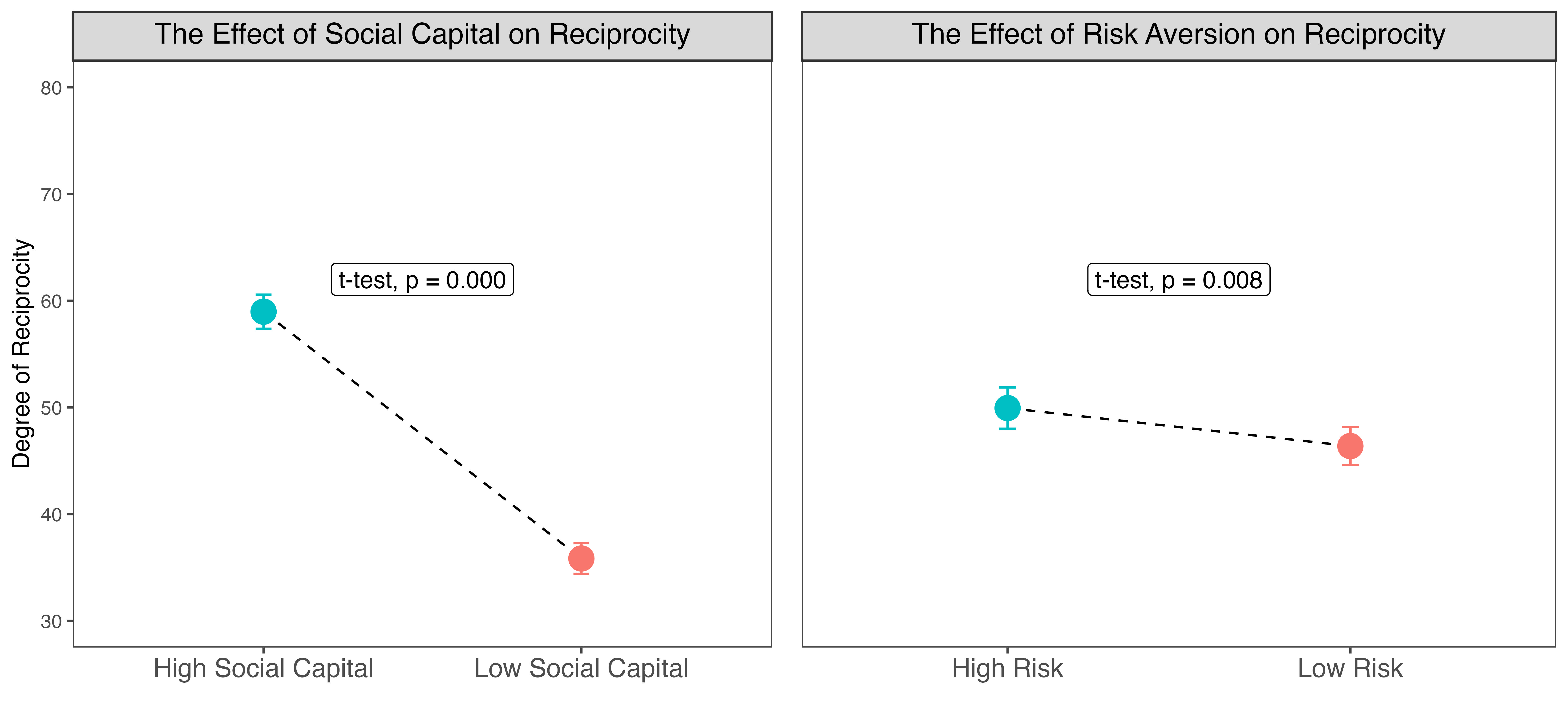Abstract
Reciprocity is a cornerstone concept in social network analysis within the collaborative governance literature, frequently used to explain bonding behaviors in networks. However, the mechanisms driving reciprocity remain contested. Two competing theories dominate the literature: one attributes reciprocity to social capital norms, where trustworthiness fosters stronger ties, while the other links reciprocity to risk aversion, suggesting it is a strategic response to mitigate the risk of defection. Despite their distinct premises, these theories lead to similar predictions about network dynamics, making it difficult to empirically differentiate between them. To clarify these mechanisms, we designed a behavioral game experiment on 981 policymakers across more than 500 U.S. municipalities. This experiment uses a 2×2 factorial ultimatum game design to compare how social capital and risk aversion conditions affect inter-jurisdictional financial collaboration in climate resilience. Participants allocated a $1 million fund under conditions varying by social capital (low vs. high, based on the proportion of prior funds received) and risk aversion (high vs. low, based on the number of competing cities). Results indicate that both high social capital and low risk promote reciprocity, but social capital’s influence is 7.5 times stronger. Subgroup analysis shows that risk aversion only predicts reciprocity when social capital is low, while social capital effects persist regardless of risk levels. Exploratory analysis examines variations across political affiliations and government roles.
Figure 1: Average Treatment Effects
